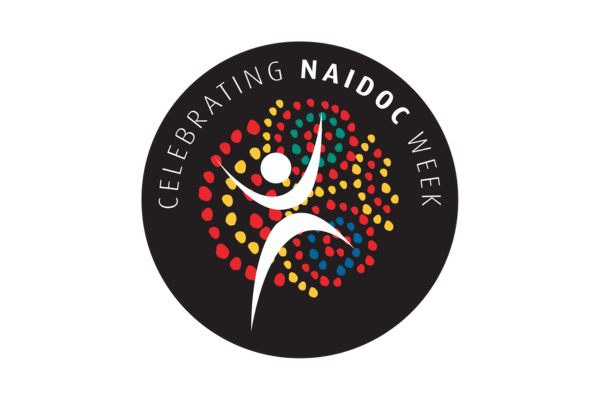Supporting young people interacting with the legal system
29 Jun 2021
- Day in the life
Ever wondered what it's like to be a psychiatrist? This series explores a day in the life of psychiatrists who work in different areas of psychiatry, from addiction psychiatry to rural psychiatry.
In this article, we hear from Dr Brendan Daugherty who is a child and adolescent forensic psychiatrist.
A Day in the Life of a Child and Adolescent Forensic Psychiatrist
When I talk to my patients, I try to see the world from their perspective so I can understand their internal world. So you can imagine the first time I interviewed a 16-year-old boy who tried to incinerate his father over a petty drug debt, I was somewhat traumatised by understanding his internal world. I was fascinated but also horrified. How was I to see the world from his perspective? How would I make a therapeutic alliance with this young man so he would consider treatment for his underlying depression? It was difficult to repress my urge to say, “what the hell were you thinking?” Ironically, it‘s our job to know.
This kind of interaction doesn‘t happen every day, but you remember them. They have an effect on you. How then does my day start? It now starts with meditation or a swim. Any antidote to trauma and chaos, I’ll take.
One of my current jobs is working for a community-based adolescent forensic team and the other involves telehealth (with intermittent visits) to a regional youth custodial centre. It is vastly different work than acute adult inpatient wards – what registrars are typically exposed to in their first years, and the type of environment synonymised with psychiatry in popular culture.
Here is a ‘typical’ day in child and adolescent forensic psychiatry (there is no typical!).
9 am: Psychiatry peer review
We have a peer review group, where a group of forensic psychiatrists discuss interesting and challenging cases in a safe space. Recently I asked my group for ideas on how to help a young man in detention who was attacking other detainees and staff because he thought they were acting like children. As a consequence, he wanted to stay by himself in a small room so he wouldn’t acquire more criminal charges. But he couldn’t stay there forever.
I didn’t think he was mentally ill, he was angry from the effects of an unfair life, so how could I help him as a psychiatrist beyond listening to him (which didn’t seem to be working)? Beyond the merits of reviewing symptoms and engaging with cultural liaison officers, we discussed the benefits and risks of offering a medication to help with de-arousal, so he may engage in therapy without assaulting others.
10 am: Violence risk assessment and management
Next I worked on a violence risk assessment and management strategy that was requested by a public mental health service. These assessments attempt to combine the evidence base of risk factors for violence and interventions to mitigate the risk, all in the context of a unique individual.
A teenage girl with autism and temporal lobe epilepsy (a form of epilepsy that can result in psychiatric symptoms) repeatedly threatened her parents and was found standing over them with a weapons on multiple occasions. This escalated in recent months whilst they were attempting to create boundaries over internet and social media use.
Was her behaviour due to rigid and fixed behaviour in autism? From temporal lobe epilepsy? Both? Or something else? Here we used the gamut of our medical knowledge, our psychiatric knowledge and our problem solving skills.
In a job so surrounded by risk (and consequent anxiety about risky situations), a key skill is knowing what risks require immediate attention and which require reassurance. Ultimately, the process of assessing and managing violence risk is not perfect, so an amount of anxiety must be tolerated.
1 pm: Multipdisciplinary root cause analysis
I attended a multidisciplinary root cause analysis meeting, about a young person with schizophrenia who was charged for a serious offence soon after leaving a custodial centre. A root cause analysis attempts to find the underlying reasons for a serious adverse outcome, particularly systemic reasons, and suggests ways a service may improve its safety. I find the process of incident review fascinating, as the underlying reasons for serious incidents are usually multi layered.
3 pm: Medicolegal reporting
Supervision of other clinicians and services is a large component of child and adolescent forensic psychiatrists’ work. On this particular day, a court clinician (psychologist) was asked to see a 16-year-old boy for a medicolegal report for potential diversion away from the legal system. The young man got into an argument with his carers and damaged some property at his residential home. He had a background of sexual abuse, attention deficit hyperactivity disorder, and conduct disorder.
If the offence is minor and the young person has a treatable mental condition, they can be diverted away from the legal system in the hope that treating their mental condition will reduce the possibility of further offences and prevent further damage from possible incarceration. We discussed the assessment, the type of treatment that would benefit this young person, and then I reviewed the final report, reviewing the diagnoses and treatment plan.
Working as a Child and Adolescent Forensic Psychiatrist
The examples provided demonstrate a number of dramatic endpoints requiring acute intervention. Yet, court and custodial settings often provide simple opportunities to intervene in cycles of disadvantage, reducing crime and suffering in society. The work can be extremely rewarding.
Most days end on time. There is opportunity for reflection and discussion – a high priority in an environment fuelled with anxiety and trauma. Despite the gravity (or perhaps because of), I find myself having fun with colleagues. No topic is off the table because a clinician in this area must be able to address all sorts of morbid, uncouth and unsavoury topics, and then discuss these to find solutions.
The intersection of developmental and medicolegal psychiatry provides interest, an excellent working environment, and a wide range of skills applicable to all areas of psychiatry.

Become a Psychiatry Interest Forum (PIF) member to gain access to information and events to learn more about psychiatry.
About the author

Dr Brendan Daugherty
Dr Brendan Daugherty is an early career psychiatrist with certificates in Child and Adolescent and Forensic Psychiatry. He works in both Sydney and the Northern Territory.
Dr Brendan Daugherty is an early career psychiatrist with certificates in Child and Adolescent and Forensic Psychiatry. He works in both Sydney and the Northern Territory.
Disclaimer: Any patients mentioned in this article have been deidentified and created for the purposes of this article. This article may represent the views of the author and not necessarily the views of The Royal Australian and New Zealand College of Psychiatrists ('RANZCP'). By accessing the article you also agree to the RANZCP Website Terms of Use Agreement.
More news & views
As of 20 September, 28 of this year’s deliverables have been completed, and the mandatory annual rep...
 07 July 2025
07 July 2025
This year’s National NAIDOC Week from 6–13 July marks a powerful milestone: 50 years of honouring an...
Qualified privilege covering Australian Peer Review Groups has momentarily expired. An application f...